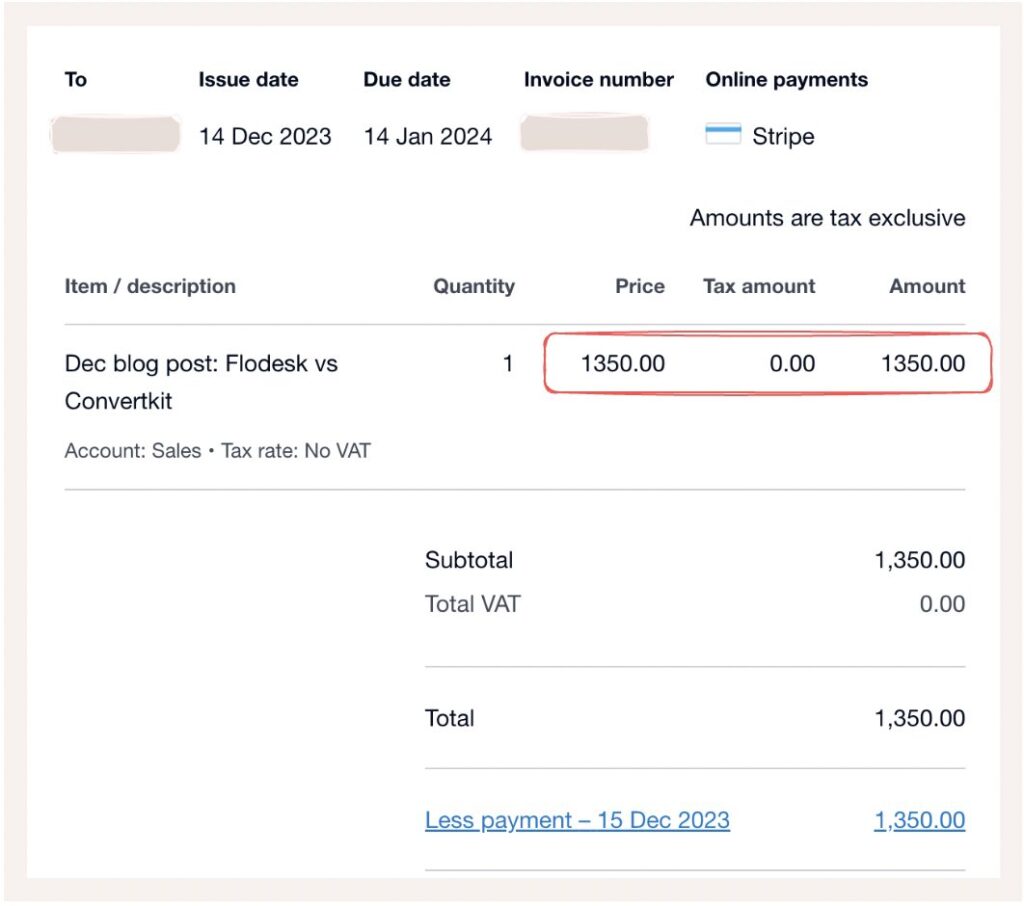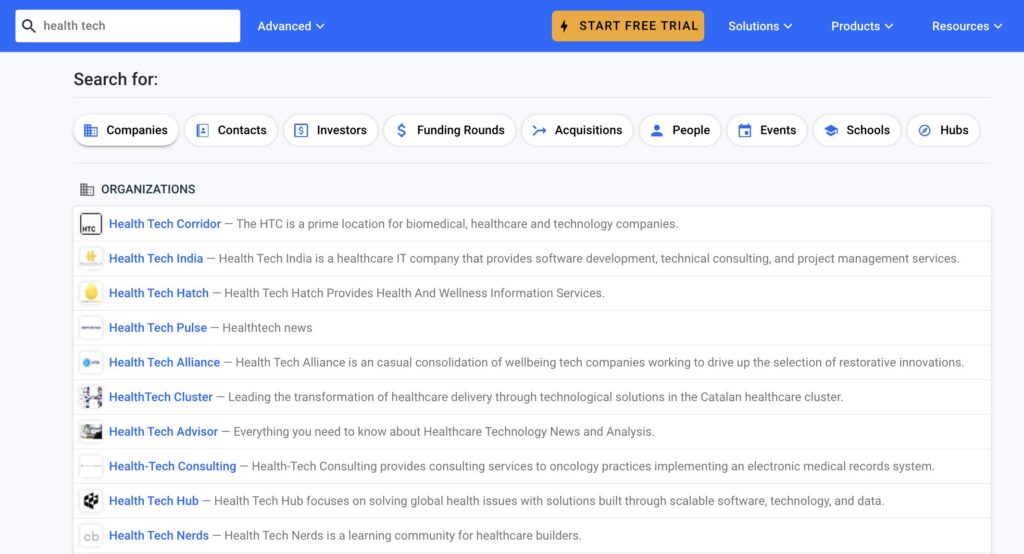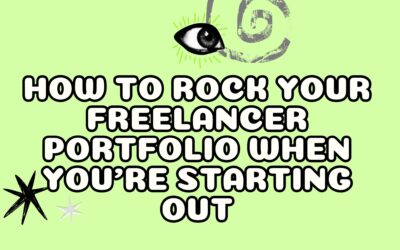If you’re reading this, chances are you’re intrigued by the idea of earning a comfortable income as a freelance blogger.
Over the past 10 years, I’ve worked with all sorts of companies in all sorts of industries. I’ve written about short spine syndrome in dogs, bald eagles, real estate in Puerto Rico, and bamboo water bottles. I’ve written it all.
But, when I started back in 2014, I had no idea that freelance blogging would be such a lucrative business.
So if you’re wondering how I went from charging £38.86 per piece to £1,000 a piece and earning £10k a month as a freelance blogger, buckle up.

The Early Days: Finding My Footing
Like many aspiring writers, I started my freelancing journey with little more than a love for words and a burning desire to make it as a writer.
Back then, landing my first writing gigs felt like scaling Mount Everest without any climbing gear. It was tough, daunting, and at times, downright discouraging.
My journey into freelancing wasn’t like most. I quit my job on the spur of the moment and had one month to start earning money to pay my bills.
I moved to Spain to reduce living costs and gave myself a year to make it work. At the time, I had no previous freelancing experience, I hadn’t been hustling on the side of my 9-5, and I didn’t know any other freelancers.
Tip 1: Start Small, Dream Big
When I first dipped my toes into the freelance writing world, I didn’t expect to start raking in thousands of pounds overnight.
Instead, I focused on building a solid foundation by taking on small writing projects, often for minimal pay. These early gigs not only helped me gain valuable experience but also allowed me to gradually refine my craft and build a portfolio that showcased my skills.
I began pitching on Upwork for pennies.
I got pretty good at standing out, but I found there was a rate ceiling on Upwork — especially in the travel industry (which is where I started out) because lots of people were willing to write about their travels for free.
And when I say I took on writing projects big and small, I mean it! Here’s a small snapshot of the projects I worked on:
- Writing fact file pieces for a knowledge website
- Writing social media posts for a hotel in Ibiza
- Writing 5-10 hotel descriptions every week for a travel operator
- Writing keyword-stuffed blog posts for a leather bag brand
- Organising and writing the content for an art show in Iceland
- Profiling modern artists on a gallery website
- Writing website copy for a real estate company in Puerto Rico
You can see it’s a real mishmash.
I aimed to stick to travel writing work, but the (well-paid) jobs were few and far between. I quickly found myself supplementing my income with other odd jobs — some that weren’t even related to writing.
The Turning Point: Niche Specialisation
As I gained more experience and confidence in my writing abilities, I made a strategic decision that would significantly impact my earning potential: niche specialisation.
Instead of casting a wide net and trying to be a jack-of-all-trades, I honed in on a few key niches that aligned with my interests and expertise.
I had a background in marketing, so it seemed like a logical step to pivot into marketing copy for agencies.
I wrote guides to Google ads, social media how-tos, and listicles about the latest digital marketing trends. I even wrote and recorded a video for a course about digital marketing.
As I started growing my portfolio in this area and getting more bylines, clients started to come to me. Soon, the majority of my client base was marketing companies or marketing tools.
It wasn’t until the pandemic that I pivoted again into writing for ecommerce and marketing technology brands. Since then, I’ve landed work with brands like Shopify, Klaviyo, CoSchedule, and Hotjar thanks to my years of experience writing marketing copy.
Tip 2: Find Your Niche and Own It
One of the biggest secrets to my success as a freelance blogger was finding my niche and owning it with unwavering confidence.
By establishing myself as an expert in specific subject areas, I was able to attract higher-paying clients who valued my specialist knowledge and insights. Plus, focusing on niche topics allowed me to streamline my marketing efforts and stand out in a crowded marketplace.
There are three things you need to consider when choosing your niche:
- Your experience
- Your interests
- The demand
It helps if you have prior experience in a niche, only because you can skip the early stages of figuring it all out. That’s not to say you can’t start from scratch — you absolutely can, it’ll just take longer.
It also helps if you enjoy the topics you write about.
As freelance bloggers, we have to write about similar topics day in and day out, so it makes it far more enjoyable if you actually like the content you’re putting out there.
I love writing for ecommerce and marketing tech brands because their audiences a predominantly the same: small business owners. And I love helping small business owners start and grow their businesses!
Finally, there needs to be a demand for services like yours in the industry you’re targeting, otherwise you’ll struggle to make an income. When you’re researching niches, run a quick Google or LinkedIn search to see if there are plenty of brands for you to pitch.
You can also check sites like Crunchbase and Wellfound to see how much funding is being pumped into your chosen niche (the more funding there is, the more likely these brands are to hire a freelance blogger).

Scaling Up: Diversifying Income Streams
As my freelance blogging business began to gain traction, I realised the importance of diversifying my income streams to safeguard against fluctuations in client demand and market trends.
In addition to writing blog posts for clients, I explored other revenue-generating opportunities such as offering content ideation and strategy services and case study writing.
I also have a suite of products for freelancers, but these currently only make up about 10% of my income.
Tip 3: Don’t Put All Your Eggs in One Basket
While freelance blogging can be a lucrative gig, don’t put all your eggs in one basket.
By diversifying your income streams, you can create multiple revenue sources that provide stability and long-term growth potential.
Whether it’s through affiliate partnerships, sponsored collaborations, or selling your own products/services, exploring diverse monetisation avenues can help you maximise your earning potential as a freelance blogger.
Other services you can offer will become clear over time.
For example, I didn’t start out offering case study writing services, but after a handful of clients requested this from me, I decided there was enough demand for it to branch out. Now, I love writing case studies and they pay much better than regular blog posts.
The Present: Enjoying the Fruits of My Labour
Fast forward to today, and I’m proud to say that my freelance blogging business generates a consistent income of £10k a month.
But it’s not just about the money; it’s about the freedom and fulfillment that comes with doing what I love every single day. Whether I’m crafting engaging blog posts, collaborating with clients, or brainstorming new content ideas, I wake up each morning excited to tackle the day ahead.
Tip 4: Never Stop Learning and Evolving
As a freelance blogger, the learning never stops.
Whether it’s staying updated on industry trends, mastering new writing techniques, or expanding your skill set, investing in your personal and professional development is key to staying ahead of the curve. Keep pushing yourself outside your comfort zone, embrace new challenges, and never stop striving for excellence in everything you do.
Remember: increase your freelance blogging rates!
I’ve been packing up my flat for the past few weeks in preparation for my move. It’s kind of cathartic going through old stuff (and finding things I thought I’d forgotten about). I particularly love coming across old notebooks, and that’s exactly what happened last weekend.
I found a notebook from 2015. From the days when I used to break down my monthly earnings by piece (yes, it took an age and it wasn’t very productive).
Turns out, I used to charge £38.86 a piece.
The figure is SO SPECIFIC because that’s what was left over after Upwork took a cut.
At the time, I was chuffed. I was getting paid to write, could you believe it?! And I was getting paid more than my minimum wage job I’d quit the year before.
When I was charging £38.86 a piece, there’s no WAY I would have believed anyone was earning £200 a piece, let alone £1,000 a piece.
Two years later, I was charging £200 a piece. At that point, I thought I was Miss Moneybags. Two years after THAT, I was charging £400 a piece.
Now, 10 years later, I regularly charge £1,000+ per piece. It took 10 years to change my mindset from employee writer monkey to someone who brought value to the businesses I wrote for.
I didn’t go from £38.86 to £1,000 overnight.
There were key things I did that made this possible (otherwise, who knows: maybe I’d still be charging £38.86 a piece?!)
Increase my prices
This is a no-brainer. Inflation happens. Wages go up. So too should our freelance rates. £38.86 is almost minimum wage for three hours of work now. I would earn better money working in a bar or restaurant (and I wouldn’t have to source my own clients each month).
Each year, I increase my prices twice — once at the start of the year, and once at the start of the new financial year (April). I only increase them incrementally at this point (usually around 5% a pop), but it compounds over time.
Here’s the script I use to do that:
“Hey [client], Just a head’s up that my rates will increase to XXX from [DATE]. Let me know if you have any questions.”
I don’t tend to add any justification because why should we justify ourselves?! But you can add something about inflation or rising costs or “to bring my rates in line with other clients”.
Up my rates for new clients
I have a rule — if three new clients accept my rate, I up them for the next one. Rinse and repeat. So, if 3 new clients have said a swift “yes” to £750 a piece, I’ll charge the next client £800.
This means I’m consistently improving my roster with higher-paying clients while growing my income. I can work with the same amount of clients, but I’m getting paid more. Win-win.
Work on my craft
My writing is considerably better than it was 10 years ago. I’ve worked with incredible editors, read a metric ton of other pieces, and written and re-written thousands of posts. It would be weird if my writing hadn’t improved.
The better I get at what I do, the easier it is to land better-paying clients and justify a higher rate.
Improve my portfolio
When I was starting, I had very few pieces in my portfolio.
But as I’ve stepping-stoned my way to working with bigger, better clients, my portfolio has grown with me. Now, it’s populated with pieces for brands like Shopify, Klaviyo, Hotjar, and CoSchedule. These big names help me demand a higher rate and offer proof that my writing is worth waaaaaay more than £38.86 a piece.
It’s important to note here that I think I’ve been “lucky” with the industry I’ve chosen. Ecommerce technology companies are on the rise and they have money, so it’s easier to demand a higher rate than if I was still working in travel or the weird facts industry (is that a thing?!).
That being said, I know plenty of freelancers who work in more “commercial” industries that still get paid bloody well and I’m sure it’s because they follow the four steps above.
Anyway, there are two points to this:
- Success is relative. 23-year-old me was chuffed with earning £38.86 a piece.
- The journey is long. It takes a LONG TIME to rewrite the beliefs that are ingrained in us from working 9-5 jobs.
You just gotta do the time.
So there you have it—my journey from aspiring writer to successful freelance blogger earning £10k a month.
While the path to freelancing success may be paved with challenges and uncertainties, remember that every setback is an opportunity for growth, and every small victory is a step closer to your goals. Believe in yourself, stay focused on your vision, and never underestimate the power of perseverance and determination.






0 Comments